In 2025, choosing the right ski size is less about rigid rules and more about finding what works best for your height, weight, skill level, and terrain. Short skis are gaining attention for their ease of use, portability, and ability to handle various conditions. Here's what you need to know:
- Height and Weight: Taller or heavier skiers typically need longer skis for stability, while shorter or lighter skiers can opt for shorter lengths.
- Skill Level: Beginners often prefer shorter skis for easier control, while experienced skiers may balance length for better performance.
- Terrain: Long skis excel on groomed trails and powder, while short skis shine in tight spaces and mixed conditions.
- Short Skis (e.g., Snowfeet*): These are compact, easy to carry, and compatible with regular winter boots, making skiing accessible and fun.
Snowfeet* products, ranging from 15 to 47 inches, offer options for beginners to advanced skiers, all at a fraction of the cost of traditional setups. Whether you're hitting the slopes or exploring local hills, short skis are a game-changer for convenience and fun.
The RIGHT Size SKI: What Size Should You BUY?
Men's Ski Sizing Basics
Getting the right ski size is all about understanding how ski length impacts your time on the slopes. Ski length, measured from tip to tail, typically ranges from 39 inches (100 cm) to 75 inches (190 cm). The ideal size for you depends on factors like your height, weight, skill level, and the type of terrain you plan to tackle.
While brands like Völkl, Atomic, and Head stick to tried-and-true length formulas, short ski designs are proving that longer isn’t always better. This shift is changing the game, offering skiers more control, portability, and versatility without compromising on performance.
Key Factors: Height, Weight, Skill Level, and Terrain
Height is often the starting point for ski sizing, but it’s no longer the only rule. Traditional long skis followed height-based guidelines, but modern short skis have made these rules less rigid.
Weight is another critical factor. Heavier skiers generally need longer skis for added stability, while lighter skiers can go shorter without losing control.
Skill level also plays a big role. Beginners often lean toward shorter skis because they’re easier to turn, while intermediate and advanced skiers aim for a balance of control and stability. That said, many experienced skiers are now embracing shorter skis for their agility and ability to handle varied conditions.
Terrain preference rounds out the equation. Long skis shine on open, groomed trails and in deep powder, but they can be tough to manage in tight or unpredictable spots. Short skis, on the other hand, thrive in diverse conditions, from groomed runs to fresh powder, making them a versatile option for all-around skiing.
These factors highlight why modern designs like Snowfeet* short skis are challenging the norms of traditional ski performance.
Long Skis vs. Short Skis
Long and short skis cater to different skiing styles and needs. Long skis, typically 65-75 inches (165-190 cm), are built for speed and stability, especially on groomed resort runs. They’re perfect for high-speed carving and floating through deep powder, which is why brands like Blizzard, Nordica, and Fischer continue to focus on these designs.
Long skis have their advantages:
- Stability at high speeds
- Better float in deep powder
- Smoother handling in choppy snow
But they’re not without drawbacks. Long skis can be tough to control at slower speeds, harder to transport, and more physically demanding to maneuver.
Short skis are a whole different story. Modern short skis, like those from Snowfeet*, usually range from 39-44 inches (99-112 cm) and are built with cutting-edge materials and techniques. These skis prioritize agility, control, and versatility instead of raw speed and flotation.
Short skis excel in challenging conditions, offering quick turns and the ability to navigate tight spaces where long skis struggle.
Portability is another game-changer. Unlike traditional skis that need roof racks, bulky bags, and lots of storage, short skis can fit in a standard backpack, making them easy to carry on public transportation. They also let you explore beyond ski resorts - think local parks, hills, or even your backyard after a fresh snowfall.
The learning curve is also much easier. Beginners often spend weeks mastering basic turns on long skis, but with short skis, they can pick up core techniques in just a few hours.
Thanks to advancements in materials and design, today’s short skis have overcome previous limitations. With improved edges, optimized flex patterns, and better stability at moderate speeds, short skis now deliver impressive control and maneuverability, making them a solid choice for skiers of all levels.
Men's Ski Sizing Chart for 2025
This updated 2025 ski sizing chart takes the guesswork out of finding the right ski length by combining height, skill level, and ski type into clear recommendations. Whether you're into classic long skis or the modern Snowfeet* short skis, this chart has you covered.
Complete Chart for Men: Imperial and Metric Units
| Skier Height | Traditional Long Skis | Short Skis (Snowfeet*) | Beginner | Intermediate | Advanced |
|---|---|---|---|---|---|
| 5'0" - 5'2" (152-157 cm) | 60-65" (152-165 cm) | 39-41" (99-104 cm) | Shorter range | Mid-range | Longer range |
| 5'3" - 5'5" (160-165 cm) | 62-67" (157-170 cm) | 39-42" (99-107 cm) | Shorter range | Mid-range | Longer range |
| 5'6" - 5'8" (168-173 cm) | 65-70" (165-178 cm) | 40-43" (102-109 cm) | Shorter range | Mid-range | Longer range |
| 5'9" - 5'11" (175-180 cm) | 67-72" (170-183 cm) | 41-44" (104-112 cm) | Shorter range | Mid-range | Longer range |
| 6'0" - 6'2" (183-188 cm) | 70-75" (178-190 cm) | 42-44" (107-112 cm) | Shorter range | Mid-range | Longer range |
| 6'3"+ (191+ cm) | 72-75" (183-190 cm) | 43-44" (109-112 cm) | Shorter range | Mid-range | Longer range |
How to use this chart:
Start by finding your height, then factor in your skill level. For traditional skis, the general rule is a length that reaches somewhere between your chin and forehead. Snowfeet* short skis, on the other hand, offer consistent performance across all heights, making them a versatile option for any skier.
Keep in mind: Snowfeet* short skis are also much easier to carry around, adding a layer of convenience to their design.
Finally, tweak these recommendations based on your weight and skiing preferences.
Adjustments for Weight and Personal Preferences
Your weight and skiing style play a big role in fine-tuning ski length. Here's how to adjust:
- Heavier skiers might prefer longer skis for added stability. However, Snowfeet* short skis are designed to provide excellent stability without the need for extra length.
- Lighter skiers should lean toward the shorter end of the range for better maneuverability and easier turns.
- If you want more agility, go shorter. For more stability, opt for the longer end of the range.
As Allie Cheney from Sun & Ski Sports puts it:
"A longer ski is capable of going faster, but you sacrifice quick-turn agility. A short ski is all about agility, but it lacks the edge length to truly soar."
If you're skiing in areas with tight trails or lots of trees - like in the Eastern United States - a shorter ski can be a game-changer. BlizzardBabe from Ski Diva Extraordinaire shares:
"I'm very athletic and strong, but I don't like speed anymore so the maneuverability of a shorter ski makes perfect sense for me. My weak spots remain bumps and trees, and I like the options that a shorter ski affords me as I work to improve."
For those who prioritize stability, traditional advice leans toward longer skis. However, Snowfeet* short skis challenge this thinking by offering surprising stability without the added length. This makes them a great option for mixed terrain.
Terrain matters too. Shorter skis shine in tight spaces like bumps and wooded areas, while longer skis might feel more at home on wide, groomed slopes where speed is the goal. But even here, the versatility and portability of Snowfeet* models give them an edge over traditional long skis.
Ultimately, the right ski length isn't just about your height or weight anymore. It's about choosing equipment that matches your lifestyle, skiing goals, and the conditions you face. Whether you go for traditional skis or the sleek Snowfeet* short skis, the key is to align your gear with how - and where - you love to ski.
Short Skis vs. Long Skis: Benefits and Comparisons
For years, the ski world leaned heavily toward the idea that longer skis were always the way to go. But Snowfeet* is challenging that mindset. While traditional brands built their reputation on long skis, more and more recreational skiers are discovering the unique perks of shorter skis.
Let’s break down how these smaller skis are changing the game on the slopes.
Portability and Convenience
Long skis can be a hassle to transport. They need roof racks, oversized bags, and plenty of storage space. Snowfeet*, on the other hand, offers gear that’s compact and easy to carry. Take the Snowfeet* Mini Ski Skates, for example - at just 38 cm (15 inches) long, they fit in a standard backpack. Even the longer Snowfeet* Short Skis, which measure 120 cm (47 inches), are much easier to manage compared to traditional skis. You can stash them in your car trunk or closet without a second thought.
Ease of Use and Versatility
Short skis don’t just win on portability - they’re also easier to use. With traditional skis, beginners often face a steep learning curve that requires professional lessons and lots of practice. Snowfeet* products are designed to be user-friendly, allowing new skiers to pick up the basics quickly and enjoy the slopes right away.
Another standout feature is their versatility. Traditional long skis are often tailored for specific conditions, but Snowfeet* gear performs well across a variety of terrains. Whether you’re cruising down groomed runs, hitting the snow park, or even gliding around your backyard, these skis deliver a smooth and stable ride. Plus, their boot compatibility is a major bonus - most Snowfeet* models work with standard winter boots or snowboard boots, so there’s no need to invest in specialized ski boots.
Feature Comparison Table
| Feature | Traditional Long Skis | Snowfeet* Short Skis |
|---|---|---|
| Length Range | Typically 152–190 cm (60–75 inches) | 38–120 cm (15–47 inches) |
| Portability | Requires roof racks or bulky bags | Backpack-friendly |
| Learning Curve | Takes time and lessons to master | Quick and easy to learn |
| Boot Requirement | Needs specialized ski boots | Works with standard winter or snowboard boots |
| Terrain Versatility | Optimized for specific conditions | Handles multiple terrains |
| Storage Space | Requires a lot of room | Fits in a closet or car trunk |
| Travel Friendliness | Can cause travel hassles and fees | Perfect for travel |
| Cost Efficiency | Often expensive setups | Affordable, starting at $150 |
| Maintenance | Needs professional care | Easy to maintain at home |
This comparison makes it clear: Snowfeet* is a practical and fun choice for recreational skiers. Instead of focusing on peak performance for specific conditions, Snowfeet* prioritizes accessibility, versatility, and convenience. It’s all about making skiing more enjoyable, without the extra hassle or expense.
sbb-itb-17ade95
How to Choose the Right Ski Length
Picking the right ski length isn’t just about following a chart or sticking to what brands traditionally recommend. It’s about matching your skis to your skill level, preferred terrain, and what you want to get out of your time on the mountain.
Skill Level and Terrain Considerations
Choosing the right ski length starts with understanding how your experience and terrain preferences affect performance.
Beginners and intermediates often do best with shorter skis. Why? They’re easier to control and make turning a breeze. Snowfeet* Mini Ski Skates (15 inches/38 cm) and Skiskates (17 inches/44 cm) are great examples. These shorter skis are perfect for learning the basics, even in your backyard, before heading to the slopes. Plus, Snowfeet* makes it easy to progress - start with Mini Ski Skates, and as your skills improve, you can transition to Skiblades without losing the benefits of shorter skis.
For intermediate skiers, there’s a common misconception that advancing means switching to longer skis. But if you’re comfortable cruising blue runs and want to try out different terrains, shorter skis can actually expand your options. Snowfeet* Skiskates at 17 inches (44 cm) are versatile enough for groomed runs, snow parks, and even hiking trails. They let you explore without locking you into one style of skiing.
Advanced skiers, on the other hand, may think they need long skis for high-speed carving. But if agility, creativity, and fun are more your style, shorter skis like Snowfeet* Skiblades (26 inches/65 cm or 39 inches/99 cm) offer a whole new way to experience the mountain. Tricks, quick turns, and playful lines become much easier when you’re not hauling around extra length.
Terrain also plays a big role. Groomed runs? Shorter skis make edge-to-edge transitions feel effortless. Powder skiing is usually associated with longer skis, but Snowfeet* POWDER (39 inches/99 cm) proves you can float through fresh snow without lugging around oversized skis. And for park skiing, shorter lengths are a no-brainer - try spinning a 360 on 75-inch skis versus 26-inch Skiblades, and you’ll see why shorter is better for tricks.
Personal Goals: Fun, Agility, or Speed
What do you want from your skiing experience? Your goals should guide your choice more than any “rules” about ski length.
If speed and stability are your top priorities, longer skis are the way to go. Traditional brands like Rossignol and Salomon specialize in 60-75 inch skis built for racing and high-speed carving.
But if you’re after agility and fun, shorter skis are a game-changer. Snowfeet* shorter skis let you zigzag through trees, stop on a dime, and even ski backward with ease. Where long skis demand wide, sweeping turns, short skis give you the freedom to play.
Convenience and versatility are also big factors. Traditional ski setups often require special boots, roof racks, and a lot of prep time. Snowfeet* gear, on the other hand, works with standard winter boots, fits in a backpack, and adapts to whatever the day throws at you. Want to ski today, hike tomorrow, and maybe throw in some tricks? Shorter skis let you do all that without needing multiple setups.
And let’s talk cost. A traditional ski package - skis, boots, bindings, poles - can easily run $800-$1,500 or more. Snowfeet* products, starting at $150, are a budget-friendly alternative for recreational skiers who only hit the slopes a few times a year.
Ultimately, it’s about being honest with yourself. If your dream is flying down black diamonds at top speed, traditional long skis might be worth it. But if you’re looking for versatility, ease, and a whole lot of fun, shorter skis - like those from Snowfeet* - are a solid choice. Their lineup is built around the idea that skiing should be simple, enjoyable, and free from unnecessary hassle. Pair these considerations with our sizing guidelines, and you’ll be set to find skis that make every trip to the mountain a blast.
Snowfeet* Product Guide and Sizing
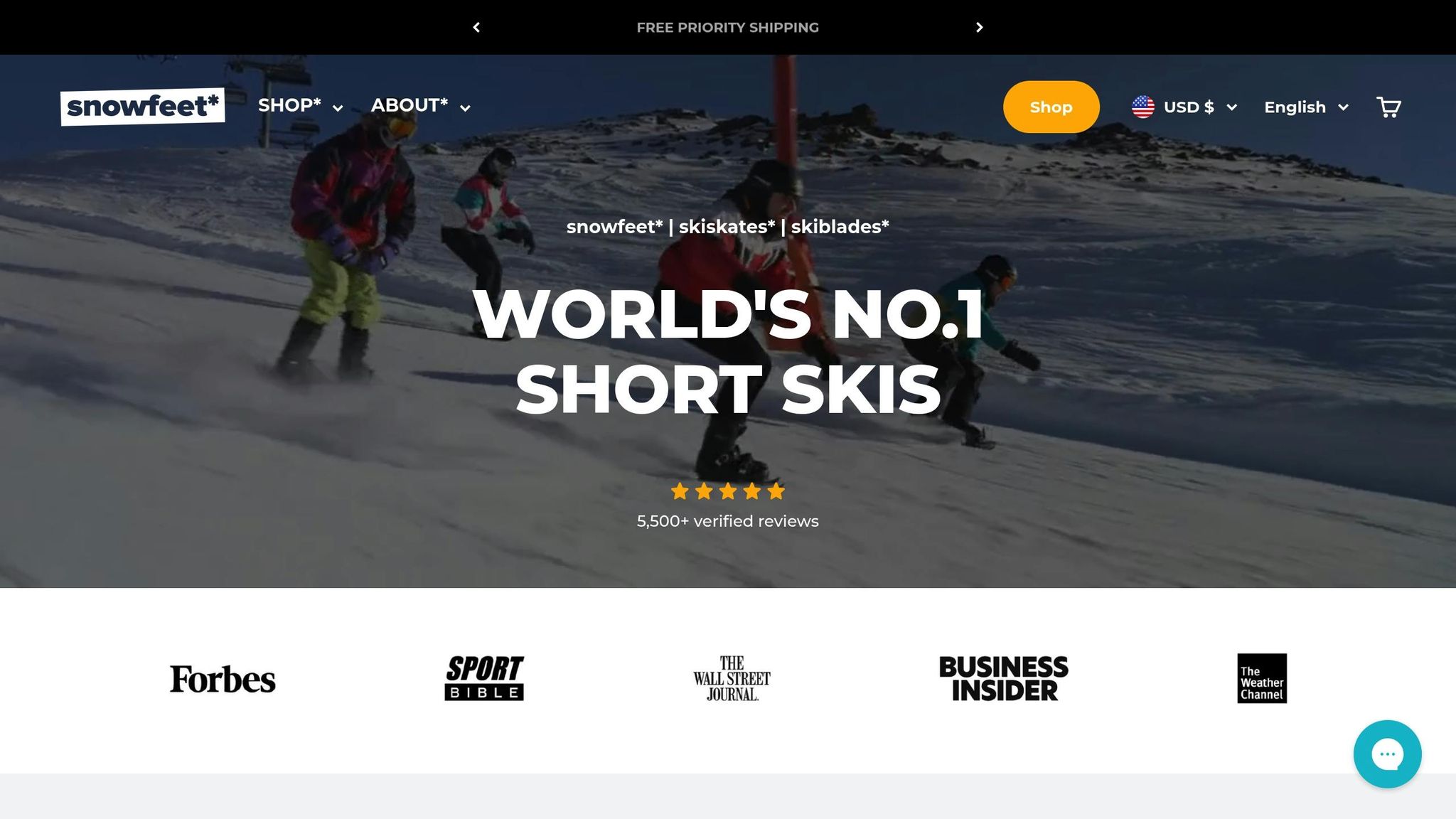
Take a closer look at the Snowfeet* lineup and see how it stacks up against traditional ski setups from big names like Rossignol, Salomon, and K2. With a fresh approach to sizing and performance, Snowfeet* products bring a whole new level of versatility to skiing.
Complete Snowfeet* Product Lineup
Snowfeet* has developed a range of short ski products tailored to different skill levels and snow conditions. Unlike traditional ski brands that mainly tweak lengths within the same design, Snowfeet* rethinks what skiing gear can do. Here's a breakdown of their lineup:
-
Snowfeet* Mini Ski Skates (15 inches/38 cm) – $150
Perfect for beginners. They're lightweight, easy to carry, and great for learning the basics. -
Skiskates (17 inches/44 cm) – $390
Built with a wood core for great balance, these are ideal for recreational skiers. They perform well on groomed slopes and in snow parks. -
Snowfeet* PRO (20 inches/50 cm) – $199
A step up from mini skates, these feature adjustable bindings and come in multiple colors. Designed for intermediate skiers. -
Skiblades – Available in two lengths:
- 26 inches (65 cm) – $450: Excellent for tricks and navigating tight spaces.
- 39 inches (99 cm) – $490: Offers better float in powder while staying much shorter than traditional skis.
-
Snowfeet* POWDER (39 inches/99 cm) – $490
Tailored for powder skiing, these challenge the idea that deep snow requires skis over 70 inches long. -
Snowfeet* Short Skis (47 inches/120 cm) – $690
The longest in the lineup, these are still shorter than standard skis. They provide stability for advanced skiers while keeping a playful edge.
Matching Snowfeet* to Your Skiing Style
Not sure which Snowfeet* product is right for you? Here’s a quick guide to help you choose based on your skiing preferences:
- Beginners: Mini Ski Skates or Snowfeet* PRO are great starting points. They’re easier to master than traditional skis.
- Casual Skiers: Skiskates or shorter Skiblades are perfect for blue and black runs, offering solid performance with added convenience.
- Park and Trick Enthusiasts: The 26-inch Skiblades are your go-to for spins, jumps, and rail slides. Their shorter length makes tricks a breeze.
- Powder Lovers: Snowfeet* POWDER or the 39-inch Skiblades handle fresh snow beautifully while staying nimble enough for tight tree runs.
- Advanced Skiers: For a unique skiing experience, try the Short Skis or longer Skiblades. They prioritize agility and creativity over sheer speed.
Pricing and Boot Compatibility
One of the standout features of Snowfeet* is how affordable and practical it is compared to traditional ski setups. While a typical setup can run you $800–$1,500 or more, Snowfeet* products range from $150 to $690.
Boot Compatibility: Snowfeet* products work with regular winter boots, snowboard boots, or ski boots. No need to spend an extra $200–$600 on specialized ski boots. Adjustable bindings make it easy to use the footwear you already own, breaking free from the usual brand-specific restrictions.
For casual skiers who only hit the slopes a few times a season, Snowfeet* offers an accessible entry point. Most models cost less than a single day’s lift tickets and rentals at major resorts. Accessories start at just $6, and winter clothing begins at $19, keeping your overall investment low.
With its lower costs, compatibility with existing boots, and easy portability, Snowfeet* offers a refreshing alternative to traditional ski gear. It’s a budget-friendly, hassle-free way to enjoy the slopes without sacrificing fun or performance.
Conclusion: Find Your Perfect Fit with Snowfeet*
In 2025, shorter skis are making waves for their performance and versatility. Snowfeet* products show that compact skis can offer incredible control on groomed runs and tight, wooded trails - areas where traditional setups from brands like Rossignol, Salomon, and K2 often struggle. With Snowfeet*, you’ll enjoy sharper turns, less strain, and a whole lot more fun, all without lugging around heavy gear. And the best part? They come at a price that doesn’t break the bank.
With prices ranging from $150 to $690, Snowfeet* gear offers a fantastic deal. The adjustable bindings fit your existing winter, snowboard, or ski boots, accommodating sizes from US 4.5 to 14.5. Plus, their lightweight design means you can ditch the roof racks - just toss them in a backpack and you’re good to go. For example, the Mini Ski Skates are only 15 inches long, making spontaneous trips and backcountry adventures easier than ever.
But Snowfeet* isn’t just for downhill skiing. These versatile skis are great for snow skating, cross-country movement, and even hiking trails. Thanks to their durable yet lightweight construction, they’re built to handle all kinds of winter activities. Whether you’re a beginner or a seasoned skier, Snowfeet* offers something for everyone.
For those new to skiing, shorter skis are easier to control, making the learning process smoother and more enjoyable. Experienced skiers - and even those with knee concerns - will appreciate the reduced strain and the added freedom to experiment and play on the slopes.
Snowfeet* is changing the way we think about winter sports. By reimagining skiing equipment, they’ve created gear that matches the needs of today’s adventurous skiers. With their precise sizing guide, you can find the perfect fit for your unique style. The choice is simple: embrace the agility and freedom of modern, compact gear, or stick with traditional setups that might not keep up with the way you want to experience the mountain.
FAQs
How do I choose the right ski length based on my skill level and terrain preferences?
Choosing the right ski length can feel a bit tricky, but it really comes down to a few key factors: your height, weight, skill level, and the type of terrain you enjoy most. A good rule of thumb for traditional skis is that they should reach somewhere between your chin and the top of your head. If you’re a beginner, shorter skis (closer to chin height) are typically easier to handle and provide more control. On the other hand, if you’re a more experienced skier, you might lean toward longer skis for better speed and stability.
Now, if you’re looking for something a little different, Snowfeet Skiblades* could be right up your alley. These shorter skis are incredibly easy to maneuver, making them a fantastic option for beginners. But don’t let their size fool you - they’re versatile enough to handle all kinds of terrain. Plus, they’re lightweight and super portable, which is perfect if you like to keep things simple and convenient. Whether you’re just getting started or want a compact, fun option to mix things up, Snowfeet* Skiblades are designed to make your time on the slopes even more enjoyable.
Why choose Snowfeet* short skis instead of traditional long skis?
Snowfeet* short skis bring a fresh twist to hitting the slopes. These compact, lightweight skis are a game-changer for anyone who loves winter sports. Whether you're just starting out or you're a seasoned skier craving something different, Snowfeet* offer a fun, easy-to-use option that’s all about portability and agility.
What sets them apart? Their size and design make them perfect for navigating tight, twisty trails and icy patches with ease. You’ll feel the difference in how quickly and smoothly you can turn. Plus, they’re super easy to carry, store, and transport - no more lugging around bulky gear. If you want to keep things simple while still having a blast on the mountain, Snowfeet* might just be your new favorite winter companion!
Are Snowfeet* products a good choice for experienced skiers who enjoy high-speed runs?
Snowfeet* products, including their Skiblades and Powder models, are all about maneuverability, portability, and having a blast on the slopes. These are built for nimble moves, quick turns, and tackling a mix of terrains with ease. But, if you're after the stability and speed needed for downhill racing or high-speed runs, they might not hit the mark, as that's not their primary focus.
That said, if you want something lightweight, compact, and just plain fun as an alternative to traditional skis, Snowfeet* gear is an awesome way to shake up your winter adventures.







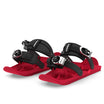
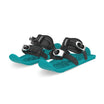













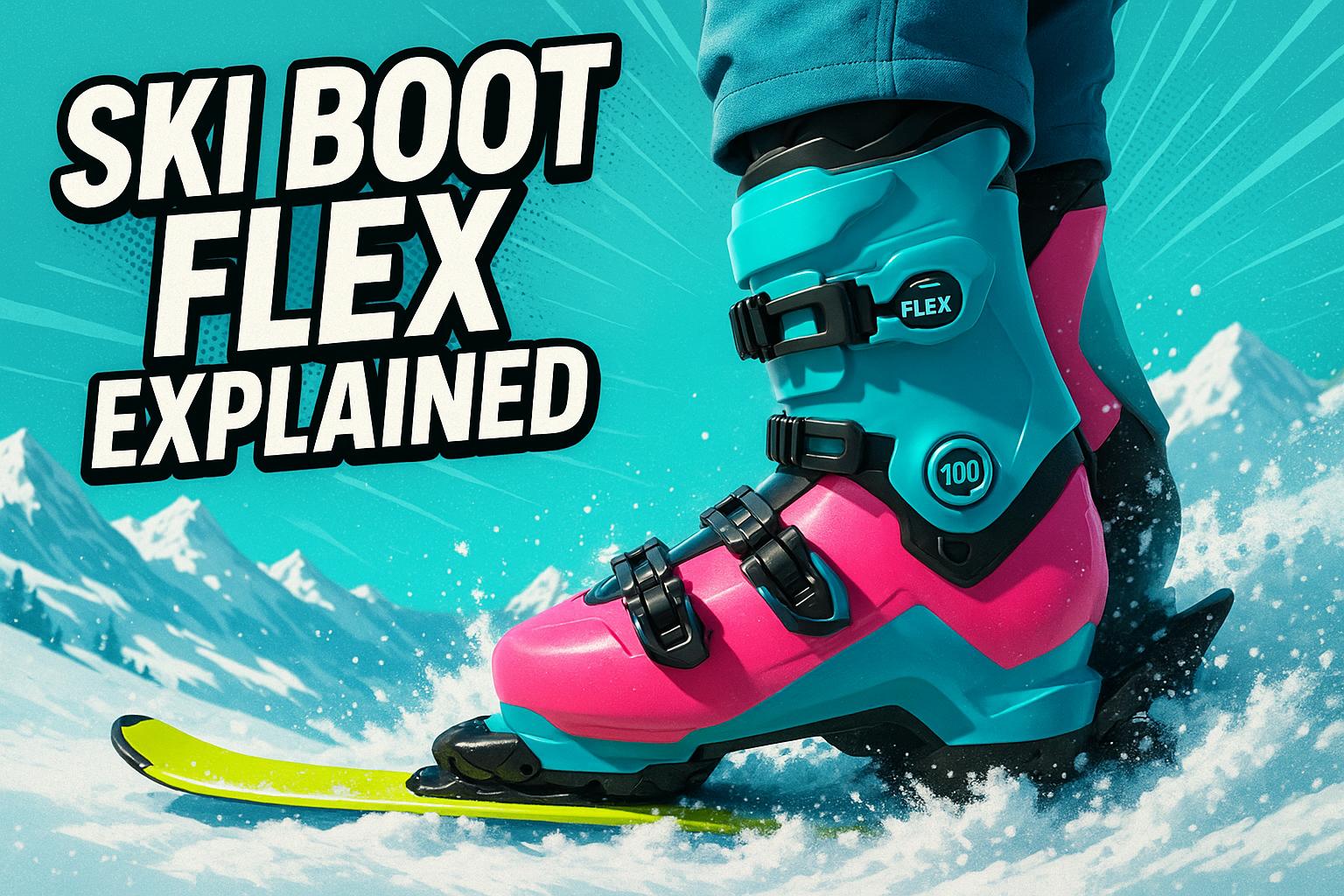
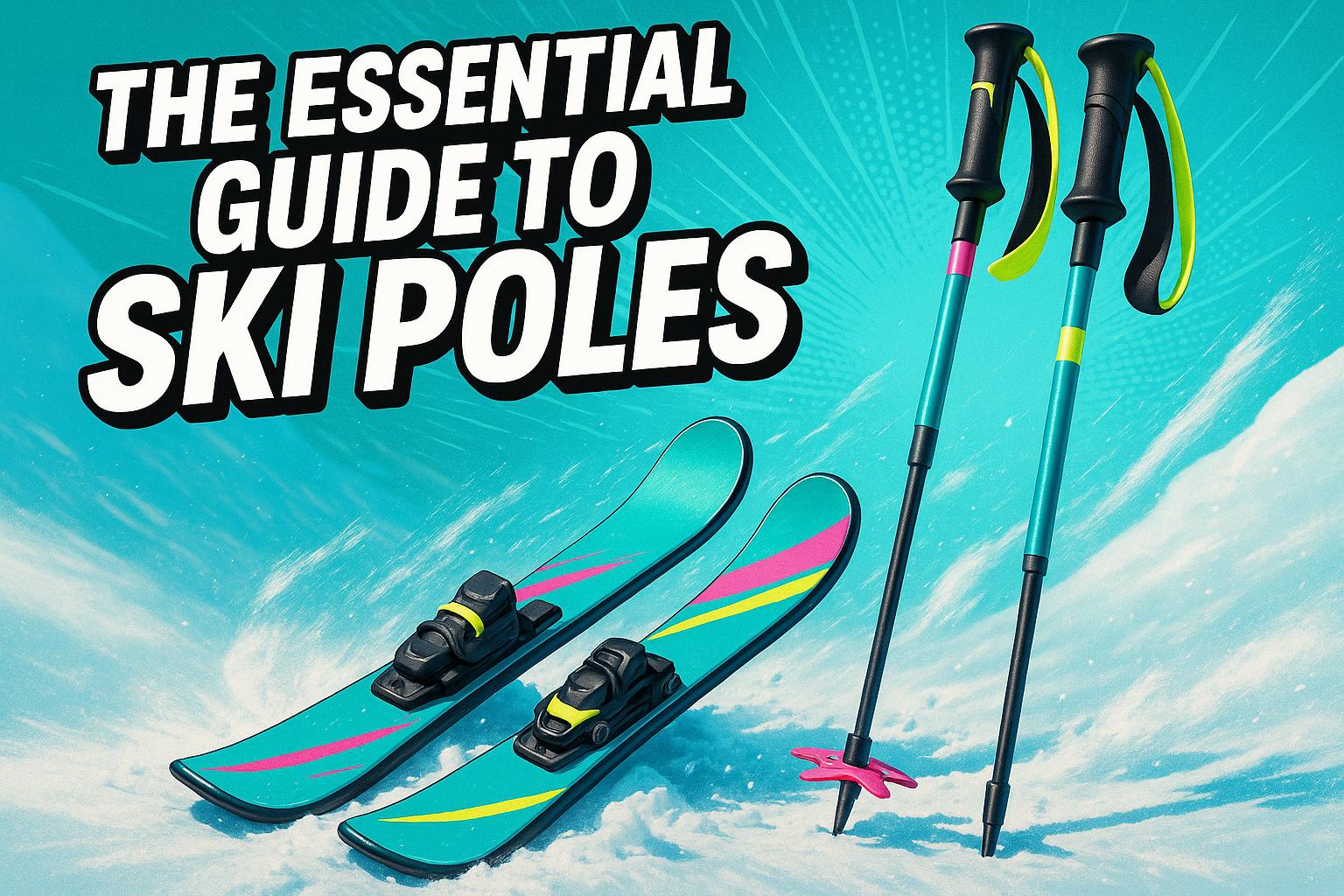




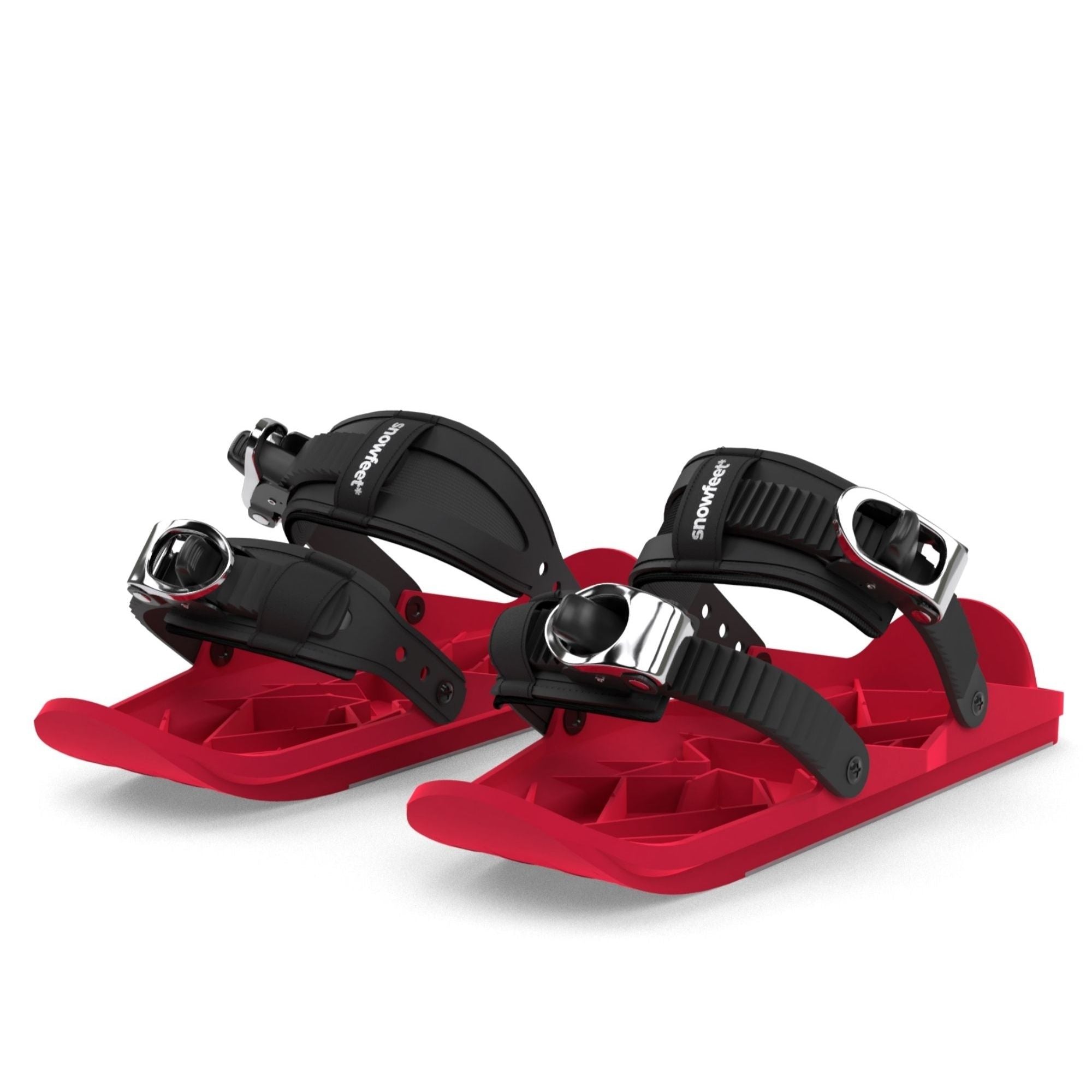
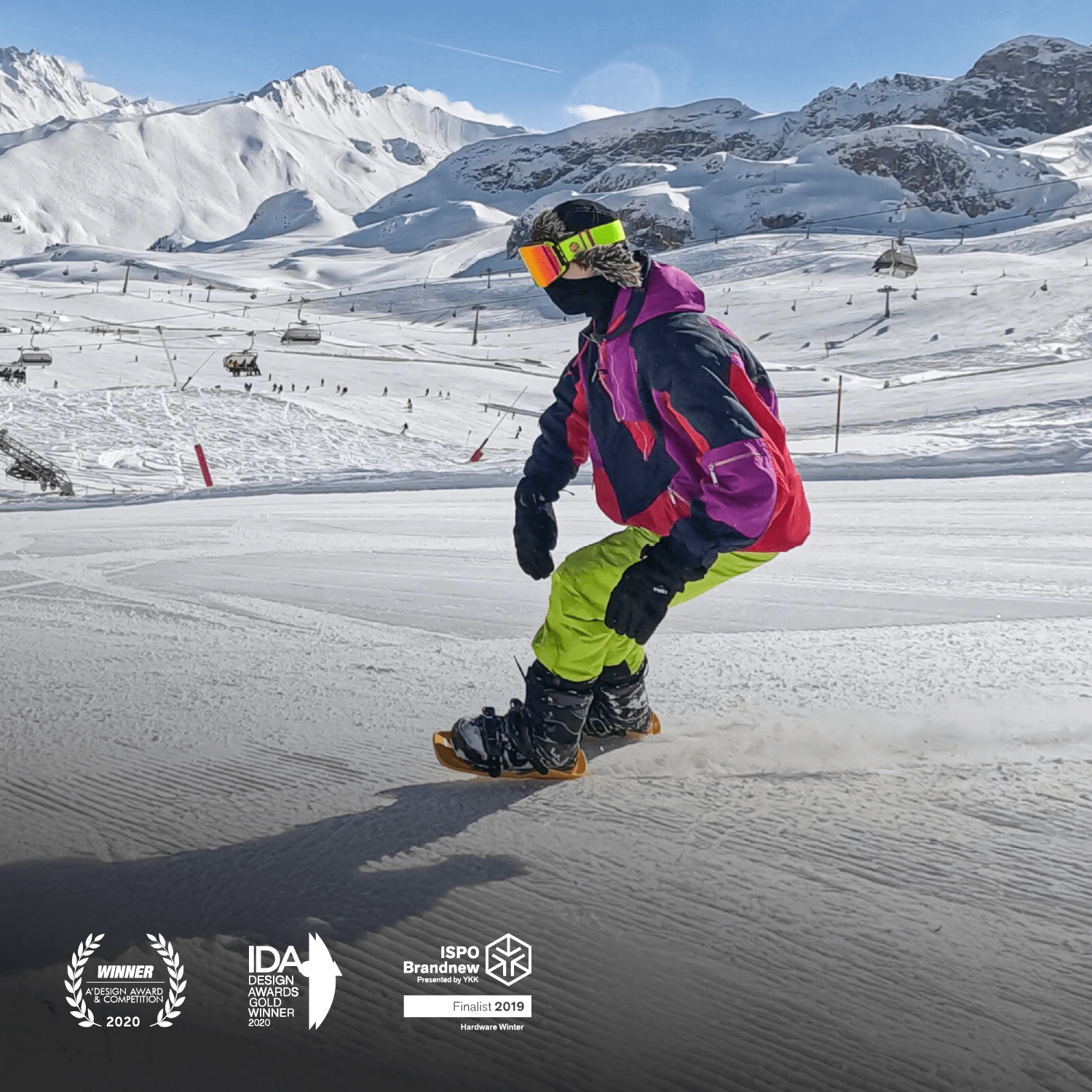




Leave a comment
This site is protected by hCaptcha and the hCaptcha Privacy Policy and Terms of Service apply.